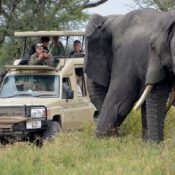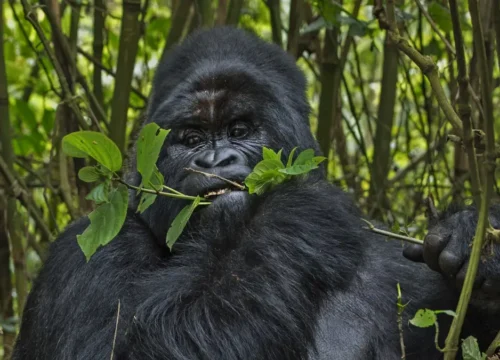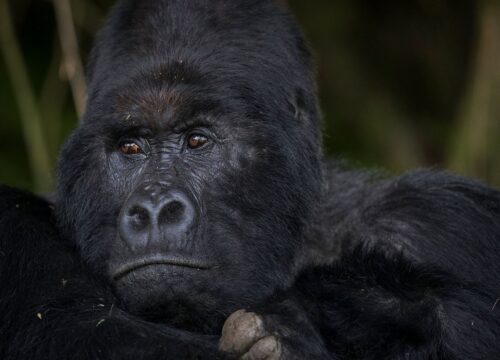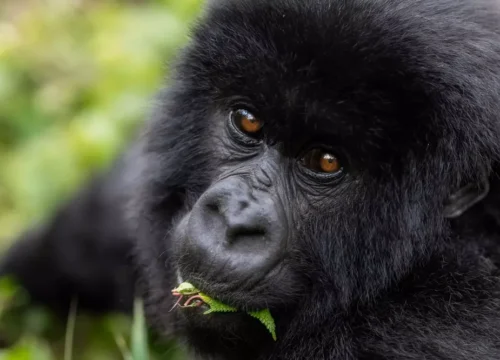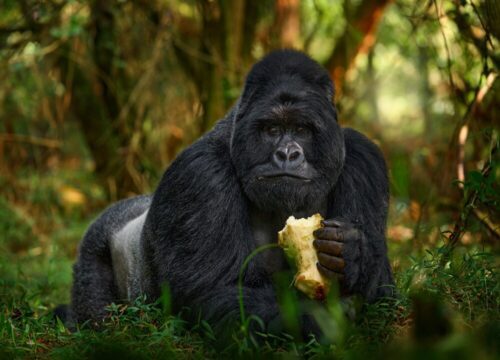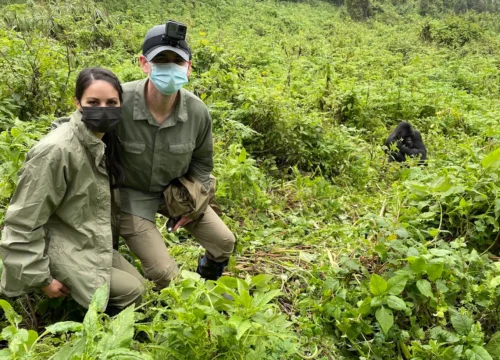Etosha National Park
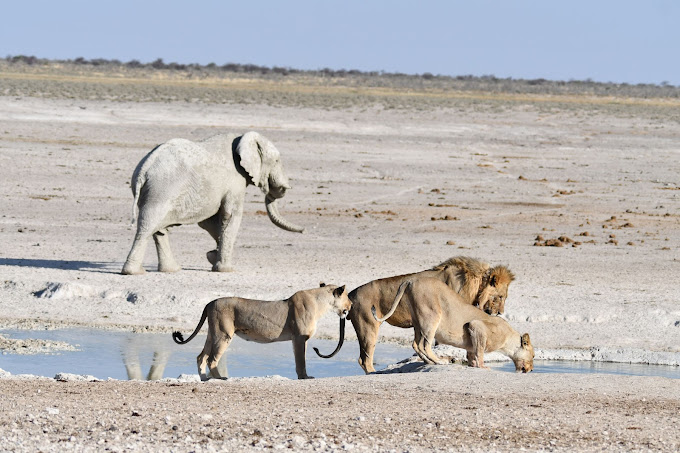
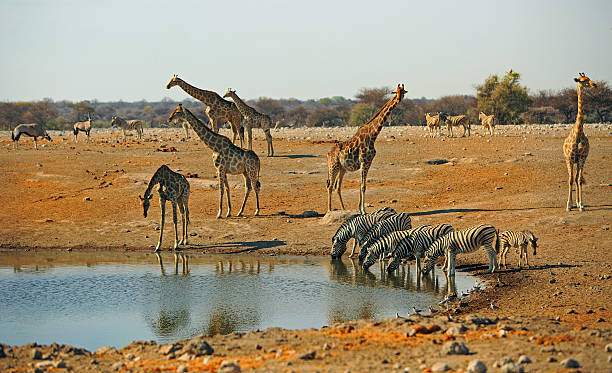
Etosha National Park Overview
Etosha National Park is Namibia’s most popular park for wildlife watching and is characterized by the vast, saline Etosha Pan. During the Dry season the waterholes around the pan become crowded with large concentrations of animals. Four of the Big Five are present, with only buffalo absent. Etosha’s floodlit waterholes provide a rare opportunity for nighttime wildlife-viewing.
Wildlife & Animals – Etosha National Park
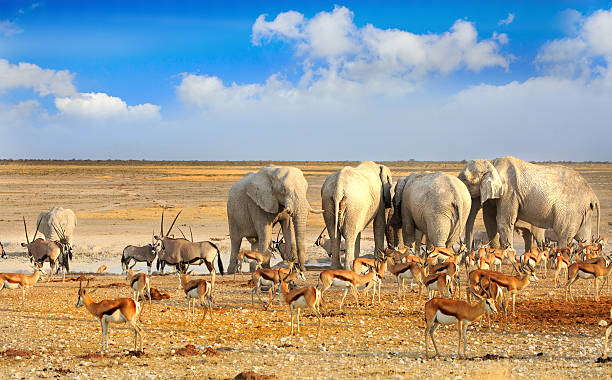
Wildlife viewing in Etosha National Park is exceptionally good during the Dry season. The variety and sheer number of animals is outstanding. Four of the Big Five are present in good numbers, only buffalo is absent. A constant stream of herbivores is commonly seen at waterholes. They include elephant, blue wildebeest, zebra, giraffe and several desert-adapted antelopes such as springbok and gemsbok.
Wildlife Highlights
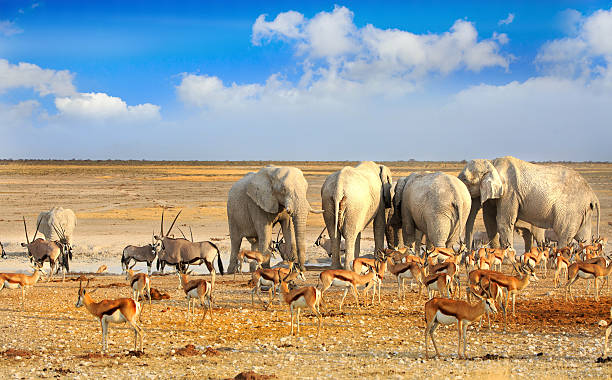
Etosha National Park has two near-endemic antelopes; the elegant black-faced impala, which can be found in breeding and bachelor herds, and the tiny damara dik-dik, usually spotted in pairs. Dusk and dawn is the best time for spotting lion, leopard and cheetah. Some of the less common predators are honey badger and bat-eared fox. Black rhino is a rare treat in the park, best spotted at night at one of the floodlit waterholes.
Best Time for Wildlife Viewing in Etosha National Park
Etosha National Park is a very seasonal park and, although it can be visited throughout the year, all the action happens during the dry months from May to October. At this time water supplies are restricted to a few waterholes and the grass is short, making wildlife-watching very easy. Animals disperse during the Wet season from November to April.
Birds – Etosha National Park
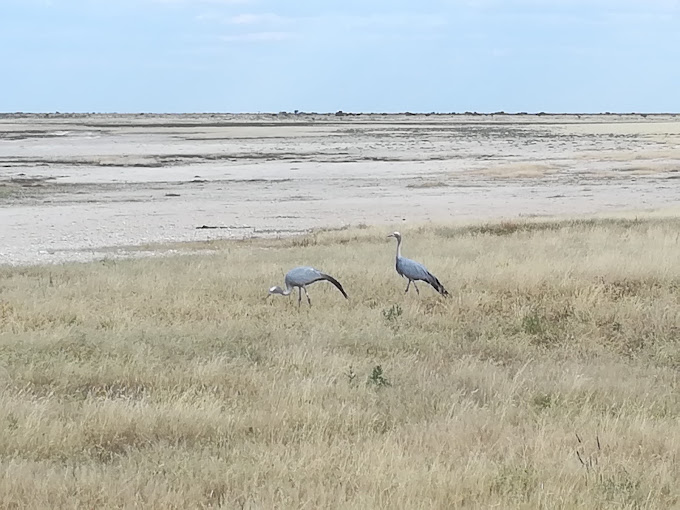
About one-third of the 340 bird species recorded in the park are migratory; including a good number of waders attracted to the Etosha National Park pan in the Wet season. The pan is an important breeding ground for lesser and greater flamingos. The desert habitat is excellent for seeing a wide variety of birds of prey – up to 35 species, including many hawks, vultures, eagles and falcons. Migratory birds are present from November to April.
Etosha National Park Birding Specials–Treats for Avid Birders
(NE) near-endemic = also lives in neighboring countries
- Abdim’s stork
- African hobby
- Bare-cheeked babbler (NE)
- Black-chested prinia
- Black-faced babbler
- Blue crane
- Caspian plover
- Chestnut weaver
- Dwarf bittern
- Greater flamingo
- Lesser flamingo
- Lesser kestrel
- Marsh sandpiper
- Monotonous lark
- Montagu’s harrier
- Monteiro’s hornbill (NE)
- Pallid harrier
- Pink-billed lark
- Red-footed falcon
- Sanderling
- Short-toed rock thrush
- Stark’s lark
- Violet wood-hoopoe (NE)
- White-tailed shrike (NE)
Best Time for Bird Watching in Etosha National Park
Etosha National Park is a very seasonal park. Drier months (May to October) are better for wildlife viewing; while the wetter climate during November to April makes for more successful bird-watching, mainly due to the arrival of summer migrants. Most birds of prey are resident and can be seen throughout the year.
Best Time To Visit – Etosha National Park
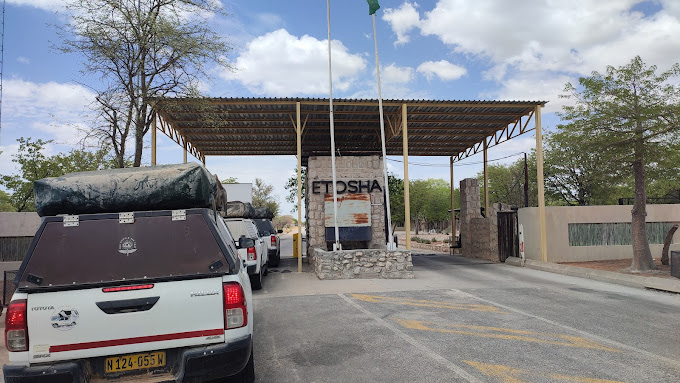
The best time to visit Etosha National Park is during the dry winter months from July to October. Less water is available during this time and the animals tend to gather around the few sources that are available. The Wet season (November to April) is less productive for spotting wildlife because the animals tend to scatter.
May to October –Dry Season – Winter
- Best time for wildlife viewing with large numbers of animals at waterholes
- Weather is good, although October is very hot
- July to September is high season and it gets very busy
- The sky is filled with dust and it can be hazy
November to April –Wet Season – Summer
- Rainfall comes as a relief, although it rarely rains for long
- Landscape is attractive and skies are clear
- Wildlife is in peak condition and plenty of babies can be seen
- Prime birding during the migrant season
- Animals are dispersed making viewing difficult
- It tends to be very hot
Weather & Climate – Etosha National Park
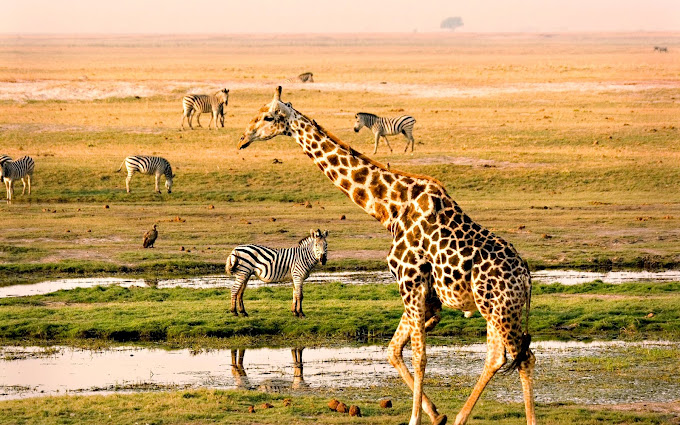
Etosha National Park is hot and relatively dry. Like most semi-desert climates there is a large variation in temperature between night and day. Rain usually falls in the form of heavy thunderstorms. There is a Wet season, which coincides with the summer months of November to April. During the dry winter months, from May to October, rainfall is a rarity.
Dry Season–May to October – Winter
Rainfall is almost completely unheard of during the coolest months of the year. Conditions become drier as the winter season progresses. Water sources for wildlife become fewer and vegetation thins out.
- May, June, July & August – It’s dry and sunny at this time of year. Afternoon temperatures are pleasant, with an average high of 27°C/80°F. Cold morning temperatures of 9°C/48°F mean you’ll need to come prepared with warm winter clothing. This is the coolest time of year.
- September & October – Temperatures rise rapidly during the day to an average of around 33°C/91°F. Morning temperatures are normally warmer too, averaging 16°C/61°F. Rains usually begin in late October or early November.
Wet Season–November to April – Summer
The Wet season coincides with the summer months, yet rainfall is little and usually occurs in the afternoon. Days are typically hot. The bitter cold mornings of the winter months are gone and averages of 16°C/61°F at night are common.
- November & December – The rains usually start in November with the occasional thundershower. When the first rain falls, it comes as a relief after a long dry winter. These are the hottest months and afternoon temperatures are around 35°C/95°F.
- January, February & March – Although it remains mostly sunny, these are the wettest months with frequent afternoon showers. Afternoons average 34°C/93°F.
- April – April sees a dramatic decrease in rain. The temperature hovers around 32°C/90°F during the day as the Wet season comes to a close.
Getting There – Etosha National Park

Etosha National Park is located 435km/270mi north of Windhoek. It is easy to visit either independently (self-drive) or on a tour. The drive on paved roads takes about 6 hours*. The roads in the eastern section of the park are accessible by 2WD car.
Most people arrive in Namibia at Hosea Kutako International Airport (WDH), located 40km/25mi east of Windhoek, and start their trip from there by 4×4 vehicle. Fly-in trips are also common, consisting of chartered flights taking travelers from park to park.
Airlines & Ticket Prices
Please check Skyscanner to see which airlines can take you to Hosea Kutako International Airport (WDH) and what tickets would cost.
Domestic Flights
Charter flights to the lodges inside or outside the park are usually booked by your tour operator.
- FlyNamibia Safari (Has daily flights between Etosha, Windhoek, Swakopmund and Sossusvlei)
Malaria & Safety – Etosha NP
Etosha National Park Safety
In our opinion Etosha National Park is a very safe travel destination. Crime of any sort within the park is almost unheard of.
The roads to Etosha, and inside the park, are generally in good condition and self-drive safaris are a popular option. There are long distances between settlements, so fill your petrol tank whenever you get the opportunity and always carry plenty of water with you.
To obtain the most up-to-date information about safety in Namibia, it is worth checking the travel advisories (see the ‘Safety & Security – Namibia’ link below).
Malaria & Vaccinations
Malaria does occur in Etosha National Park – the risk is low from May to September and increases in the wet months from October to April. During these months it is recommended to take antimalarials and also to take precautions such as covering up in the evening and applying mosquito repellent (those containing DEET are most effective). It is recommended to visit a travel clinic before coming to Namibia. Several vaccinations are recommended and usually administered before your departure and a yellow fever vaccine is required when traveling from a country with high risk of transmission.
Wildlife Viewing in Etosha National Park
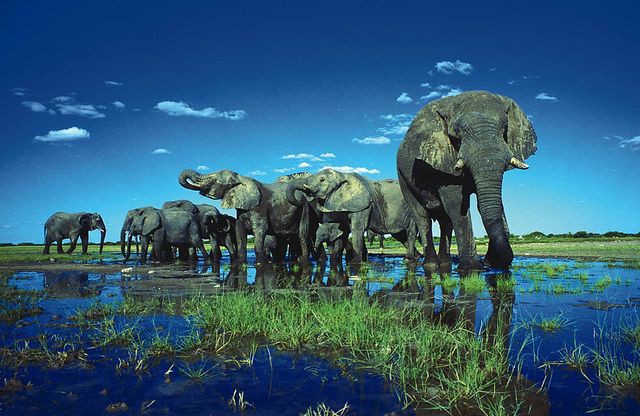
Wildlife viewing is very safe. Incidents are very rare and easily avoided; self-drive visitors should familiarize themselves with the rules of the park and those on a guided tour should listen to their guide’s instructions. There are many elephants in the park and it is important not to drive between a herd or approach them too closely.
Want to Visit Etosha National Park?
INQUIRE NOW
GENERAL INFORMATION ON A SOUTH AFRICA SAFARI
Book a Customized Safari
Read about
10 Things you Should NOT DO on an African Safari.
What to expect on a safari in Uganda.
Bwindi Impenetrable National Park
How to Choose the Best Tour Operate for Your Safari in Africa
12-Day Gorilla Tracking in Bwindi
Some of our Gorilla and wildlife Safaris
1 Day Jinja Ultimate tour Experience
1 Day White Water Rafting in Jinja
3 Days Bwindi Gorilla Habituation via Rwanda
3 Day Birding Safaris and Photography in Uganda
3 Day Safari to Queen Elizabeth National Park
3 Day fly in Gorilla Trekking Safari from Masai Mara
3 Day Grand Gorilla Trekking Safari
4 Day Chimpanzee and Gorilla Trekking Safari
Recent Posts
Last Minute Deals
Quick booking process
+49 1575 4711313



